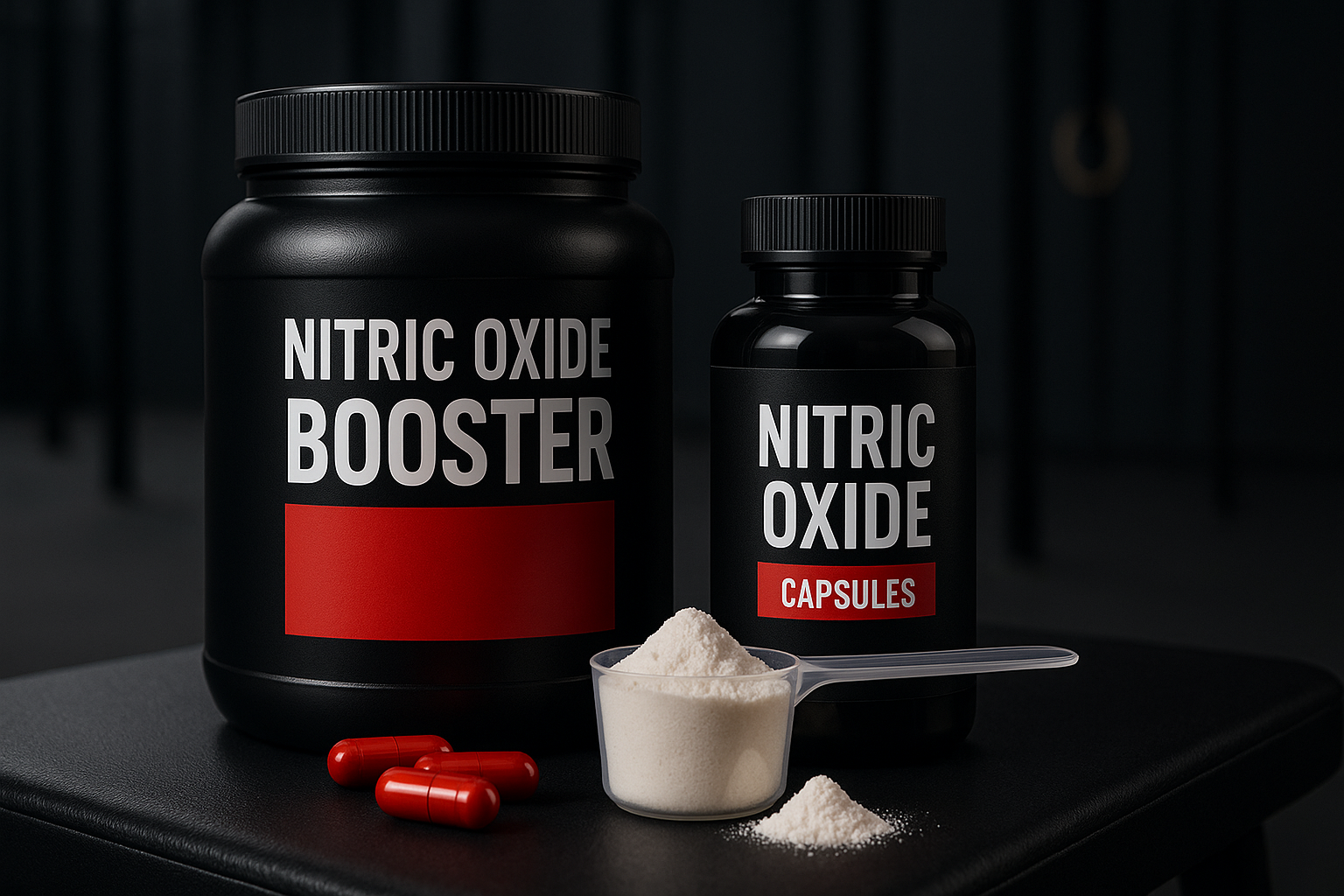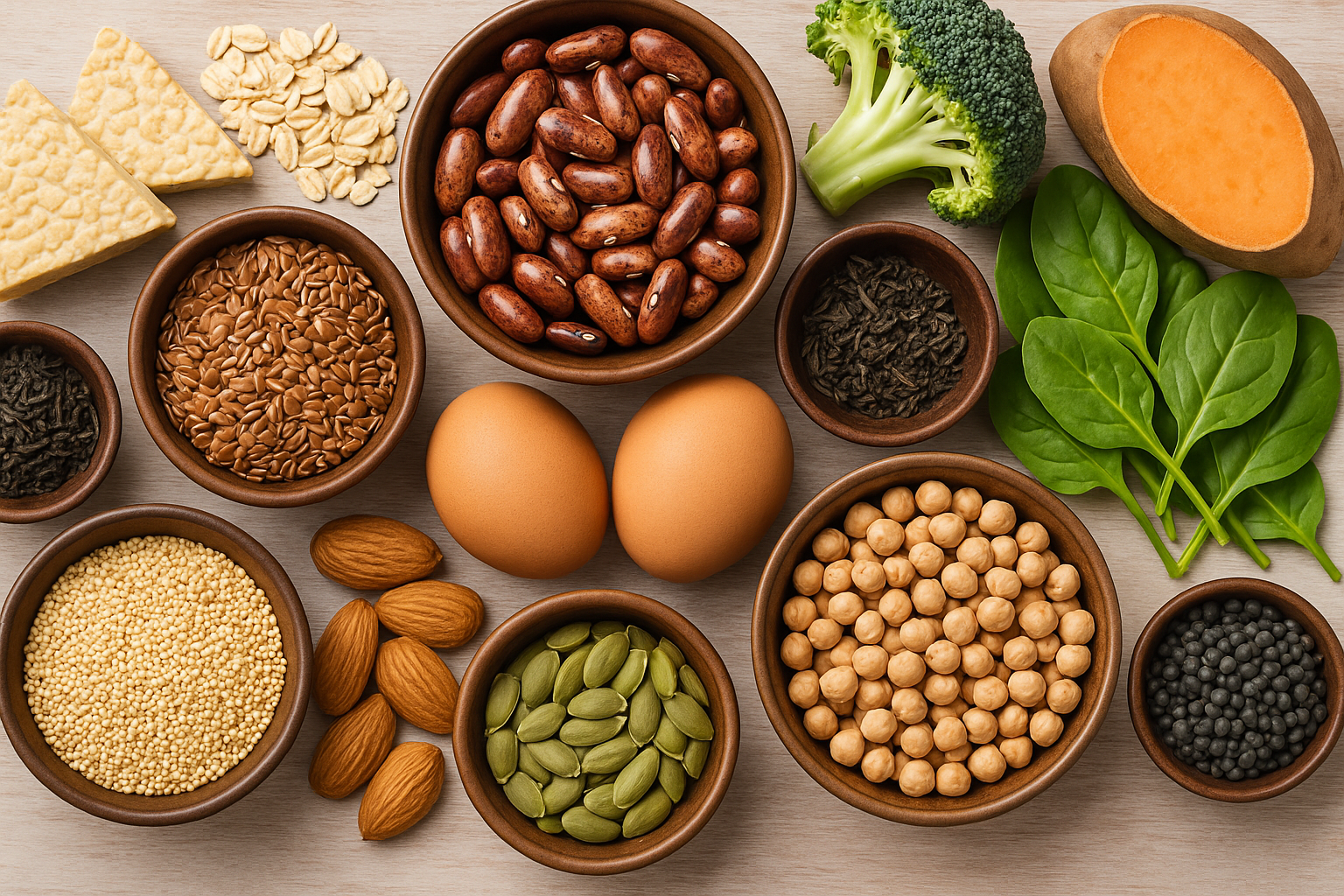Building muscle is more than just lifting weights—it’s a scientifically driven process involving cellular adaptation, metabolic responses, and mechanical demands. Whether you’re a fitness enthusiast or just starting your journey, understanding how muscle growth works is key to achieving your goals. This guide unpacks the science behind muscle development, providing actionable insights to maximize your results.
What Is Muscle Growth?
Muscle growth, or hypertrophy, refers to an increase in muscle size due to the enlargement of muscle fibers. This complex process is driven by three primary mechanisms: mechanical tension, muscle damage, and metabolic stress. By targeting these factors through effective training and nutrition, individuals can achieve noticeable improvements in strength and aesthetics.
Hypertrophy vs. Hyperplasia: How Muscles Adapt
Hypertrophy involves the thickening of existing muscle fibers, while hyperplasia refers to an increase in the number of muscle fibers. Although hypertrophy is the dominant mechanism in humans, some studies suggest hyperplasia might contribute to muscle growth under specific conditions, such as high-intensity training.
The Science of Mechanical Tension and Its Role in Muscle Growth
Mechanical tension is one of the primary drivers of muscle hypertrophy, referring to the force exerted on muscle fibers during contraction. This tension triggers a cascade of cellular responses that promote protein synthesis, muscle repair, and growth. By effectively incorporating mechanical tension into your training program, you can optimize muscle-building outcomes.
How Mechanical Tension Stimulates Growth
Mechanical tension works by activating mechanosensors in muscle fibers. These sensors detect the strain caused by heavy loads and trigger intracellular signaling pathways, including the mTOR pathway (mechanistic target of rapamycin). The activation of mTOR leads to increased protein synthesis, the repair of damaged muscle fibers, and ultimately, hypertrophy.
The key components of mechanical tension are:
- Active Tension: Created during muscle contraction under load.
- Passive Tension: Generated when muscles are stretched under resistance.
Both types contribute to hypertrophy by stimulating satellite cell activity, increasing muscle fiber size, and strengthening connective tissues.
Maximizing Mechanical Tension in Your Workouts
To harness the benefits of mechanical tension, your training should focus on heavy, controlled movements with proper technique. Here are strategies to maximize mechanical tension:
- Progressive Overload
Gradually increasing the weight, reps, or intensity ensures muscles experience higher levels of tension over time.- Aim to increase weight by 2.5–5% when your current load becomes manageable.
- Use Compound Movements
Compound lifts engage multiple muscle groups and generate significant mechanical tension.- Examples: Squats, deadlifts, bench presses, pull-ups, and overhead presses.
- Focus on Full Range of Motion
Performing exercises through the full range of motion stretches and contracts muscles completely, maximizing tension.- Avoid short, partial reps unless using advanced techniques like partials to exhaust muscles.
- Slow Down the Tempo
Slow, controlled movements amplify tension, especially during the eccentric (lengthening) phase.- Example: Lower a barbell in 3–5 seconds during a bench press.
- Incorporate Isometric Holds
Isometric holds create sustained tension in the muscle without movement.- Example: Pausing at the bottom of a squat or holding a plank position.
- Prioritize Heavy Loads in Low-Rep Ranges
Lifting heavy weights with 3–8 reps per set focuses on recruiting fast-twitch muscle fibers, which respond best to tension.- Combine heavy sets with higher-rep, moderate-weight sets to cover all muscle fiber types.
- Take Longer Rests
This will make sure you will recover enough between sets to be able to handle more weight for more reps, maximizing the amount of mechanical tension you’ll administer to your muscles.
Understanding Muscle Damage, the Role of Satellite Cells, and How to Maximize It
Muscle damage occurs when intense exercise creates microscopic tears in muscle fibers, initiating a repair process that strengthens and enlarges the tissue. A critical player in this repair process is the satellite cell, a type of muscle stem cell vital for regeneration and growth.
When muscle fibers sustain damage, satellite cells are activated by growth factors, such as hepatocyte growth factor (HGF) and insulin-like growth factor-1 (IGF-1). These cells proliferate and fuse with the damaged fibers, contributing new nuclei that support protein synthesis and the repair process. This not only restores the muscle but also enhances its potential for future growth.
This phenomenon often manifests as delayed onset muscle soreness (DOMS), typically peaking 24 to 72 hours post-exercise.
While muscle damage has been traditionally associated with hypertrophy, recent insights suggest that its role may not be as pivotal as once thought. Research indicates that muscle growth can occur independently of significant muscle damage. In fact, hypertrophy is primarily driven by mechanical tension and metabolic stress rather than muscle damage alone.
It’s essential to understand that muscle damage is not a prerequisite for muscle growth. Overemphasizing muscle damage can lead to excessive soreness, potentially hindering subsequent training sessions and increasing the risk of injury. Therefore, focusing on progressive overload, proper nutrition, and adequate recovery is more beneficial for promoting hypertrophy than deliberately seeking muscle damage.
While muscle damage is necessary for growth, excessive damage can delay recovery and hinder performance. Here’s how to strike the right balance:
- Prioritize Recovery: Rest 48–72 hours between sessions targeting the same muscle group.
- Fuel Properly: Consume sufficient protein (1.5–2 g/kg of body weight daily) and carbohydrates to support repair.
- Manage Volume: Gradually increase training load to avoid overwhelming your body.
Maximizing muscle damage through these strategies, coupled with proper recovery, ensures you achieve optimal growth while minimizing the risk of injury or burnout.
Metabolic Stress: The “Pump” That Drives Muscle Growth
Metabolic stress is one of the three primary mechanisms of muscle hypertrophy, alongside mechanical tension and muscle damage. Often referred to as the “pump,” metabolic stress occurs when high-intensity exercise leads to the accumulation of metabolites such as lactate, hydrogen ions, and inorganic phosphate in the muscles. This buildup triggers cellular responses that stimulate muscle growth and adaptation.
How Metabolic Stress Promotes Hypertrophy
When muscles are exposed to sustained or repeated tension, blood flow to the area is restricted (a phenomenon known as occlusion). This restriction traps metabolic byproducts within the muscle. These metabolites act as signaling molecules, promoting anabolic responses such as:
- Increased Cellular Swelling
The trapped fluids cause the muscle cells to swell, putting pressure on their membranes. This swelling acts as a signal for the muscle to strengthen its structure to withstand future stress, contributing to hypertrophy. - Enhanced Hormonal Response
Metabolic stress increases the release of growth-promoting hormones such as growth hormone (GH) and insulin-like growth factor-1 (IGF-1), both of which amplify protein synthesis. - Fiber Recruitment
The fatigue caused by metabolic stress forces the body to recruit additional motor units, including fast-twitch muscle fibers—the fibers with the highest growth potential. - Stimulated mTOR Pathway
Metabolic stress activates the mTOR signaling pathway, a critical regulator of protein synthesis and muscle growth.
Maximizing Metabolic Stress in Your Workouts
To capitalize on metabolic stress, focus on training techniques and strategies that increase time under tension (TUT) and emphasize high-volume, low-rest protocols.
- Perform High-Rep Sets
- Use a rep range of 12–20 with moderate weights.
- Example: Dumbbell bicep curls for 15–20 reps to create a deep muscle burn.
- Shorten Rest Periods
- Limit rest between sets to 30–60 seconds to maintain a high level of stress.
- This also enhances cardiovascular endurance while promoting hypertrophy.
- Use Drop Sets
- Perform a set to failure, then reduce the weight by 20–30% and continue without resting.
- Example: Start with a heavy dumbbell press, then drop to a lighter pair and push to exhaustion.
- Incorporate Supersets and Giant Sets
- Supersets involve performing two exercises back-to-back for the same muscle groups.
- Giant sets combine three or more exercises without rest to maximize metabolic stress.
- Emphasize Tempo Training
- Slow down both the eccentric (lengthening) and concentric (shortening) phases of each lift.
- Example: Lower a squat in 4 seconds, pause briefly, and return in 2 seconds.
- Blood Flow Restriction (BFR) Training
- Use BFR bands to partially restrict venous blood flow while lifting light weights.
- This method amplifies metabolic stress without needing heavy loads.
The Role of Metabolic Stress in Sarcoplasmic Hypertrophy
Metabolic stress plays a significant role in sarcoplasmic hypertrophy, which increases the volume of sarcoplasmic fluid within muscle cells. Unlike myofibrillar hypertrophy, which focuses on the growth of contractile proteins, sarcoplasmic hypertrophy is associated with a “pumped” appearance and larger muscle size without a proportional increase in strength.
Sarcoplasmic vs. Myofibrillar Hypertrophy
There are two primary types of hypertrophy:
- Sarcoplasmic Hypertrophy
- Involves an increase in the volume of sarcoplasmic fluid within muscle cells.
- Leads to larger muscle size but less impact on strength.
- Common in bodybuilders aiming for aesthetics.
- Myofibrillar Hypertrophy
- Results from the growth of contractile proteins (actin and myosin).
- Enhances strength and functional performance.
- Ideal for athletes and powerlifters.
Balancing both types ensures well-rounded development.
Henneman’s Size Principle: The Key to Optimizing Muscle Growth
Henneman’s Size Principle is a foundational concept in exercise science that explains how motor units (groups of muscle fibers and the motor neurons that control them) are recruited during physical activity. This principle states that smaller motor units, which innervate slow-twitch muscle fibers, are activated first, followed by larger motor units that control fast-twitch fibers, as the demand for force increases.
This sequential recruitment has significant implications for designing training programs, particularly when balancing intensity and repetitions in reserve (RIR) to maximize muscle growth.
Why the Size Principle Matters for Hypertrophy
The two main types of muscle fibers differ in their properties and growth potential:
- Slow-Twitch (Type I Fibers): Smaller, fatigue-resistant, and optimized for endurance.
- Fast-Twitch (Type II Fibers): Larger, more powerful, and responsible for explosive strength and hypertrophy.
The fast-twitch fibers are the ones with the greatest potential for hypertrophy, but they are only recruited when force production demands are high—such as during heavy lifting or at the point of failure in higher-repetition sets.
This makes understanding the Size Principle crucial for optimizing:
- Intensity: Higher loads recruit fast-twitch fibers more effectively.
- Repetitions in Reserve (RIR): Training close to failure ensures that even lighter loads activate larger motor units.
Intensity and Its Impact on Recruitment
To fully engage all motor units, training intensity must challenge the muscle. Here’s how different intensity levels interact with the Size Principle:
- Heavy Loads (1–6 Reps, 80–90% 1RM)
- Fast-twitch fibers are recruited almost immediately due to the high force demand.
- Ideal for building strength and stimulating myofibrillar hypertrophy.
- Requires longer rest periods (2–5 minutes) to recover fully between sets.
- Moderate Loads (6–12 Reps, 65–80% 1RM)
- Combines recruitment of both slow-twitch and fast-twitch fibers as fatigue builds.
- Ideal for hypertrophy, as it balances mechanical tension, muscle damage, and metabolic stress.
- Rest periods of 60–90 seconds are typically sufficient.
- Light Loads (12–20+ Reps, <65% 1RM)
- Initially relies on slow-twitch fibers, with fast-twitch fibers only recruited when nearing failure.
- Effective if training to failure or very close to it (0–2 RIR).
- Requires shorter rest periods (30–60 seconds) to maintain metabolic stress.
Repetitions in Reserve (RIR) and Maximizing Fiber Recruitment
Repetitions in Reserve (RIR) refers to how many reps you have left in the tank before reaching failure. Adjusting RIR is a practical way to ensure the activation of fast-twitch fibers, even with submaximal loads:
- Training Close to Failure (0–2 RIR)
- Near failure, slow-twitch fibers fatigue, forcing the recruitment of fast-twitch fibers to maintain force production.
- Essential for hypertrophy when using moderate or light weights.
- Training Further From Failure (3–5 RIR)
- Limits the activation of fast-twitch fibers, especially with lighter loads.
- Useful for volume accumulation but less effective for hypertrophy unless combined with heavier weights.
Application: Balancing Intensity and RIR for Growth
To effectively apply Henneman’s Size Principle to training, consider these practical strategies:
Heavy Load, Low Reps (1–6 Reps, 0–3 RIR)
- Focus on compound lifts like squats, deadlifts, and bench presses.
- Use for strength building and to immediately recruit fast-twitch fibers.
- Train further from failure (2–3 RIR) to manage fatigue and reduce injury risk.
Moderate Load, Moderate Reps (6–12 Reps, 0–2 RIR)
- Ideal for hypertrophy as it balances mechanical tension and metabolic stress.
- Push closer to failure (0–1 RIR) to ensure full recruitment of fast-twitch fibers.
Light Load, High Reps (12–20+ Reps, 0 RIR)
- Effective when training to absolute failure.
- Best used with isolation exercises or as accessory work to minimize joint strain.
The Importance of Proteins in Muscle Growth
Protein is critical for anabolism (muscle-building). To optimize muscle repair and growth:
- Consume 1.5–2 grams of protein per kilogram of body weight daily.
- Spread protein intake evenly across meals.
- Focus on high-quality sources like lean meats, eggs, dairy, and plant-based options.
Maintaining a positive nitrogen balance ensures your body has enough protein to support muscle repair. Nitrogen is a key component of amino acids, the building blocks of protein. Achieving a positive balance involves:
- Consuming sufficient calories and proteins.
- Supplementing with protein powders if necessary.
- Monitoring recovery and adjusting intake based on training intensity.
Common Myths About Muscle Growth
- “Lifting heavy is all you need.”
While heavy lifting is essential, a combination of volume, intensity, and metabolic stress drives optimal growth. - “Muscle soreness equals growth.”
Soreness indicates muscle damage but isn’t the sole indicator of progress. - “More protein is always better.”
Excess protein beyond your needs offers no additional benefit and can actually be converted to fat.
External Factors Influencing Muscle Growth
Beyond training and nutrition, several factors affect your ability to build muscle:
- Genetics: Determines muscle fiber composition and growth potential. You can discover your potential by taking our test here.
- Age: Muscle-building capacity decreases with age, making consistent training essential.
- Hormones: Testosterone, growth hormone, and insulin-like growth factors play pivotal roles.
Key Takeaways for Effective Muscle Growth
To achieve consistent and sustainable muscle growth, focus on:
- Incorporating a mix of mechanical tension, muscle damage, and metabolic stress.
- Balancing sarcoplasmic and myofibrillar hypertrophy through diverse training.
- Prioritizing nutrition, especially protein intake to keep a positive nitrogen balance.
Conclusion: Take the Next Step with Empowerise
Understanding the mechanisms of muscle growth empowers you to train smarter, eat better, and recover faster. Whether you’re a beginner or an advanced athlete, a science-based approach ensures long-term success.
Ready to elevate your training and reach your full potential? Join our coaching program today for personalized guidance, expert support, and proven results. Let Empowerise be your partner in achieving your fitness goals.






